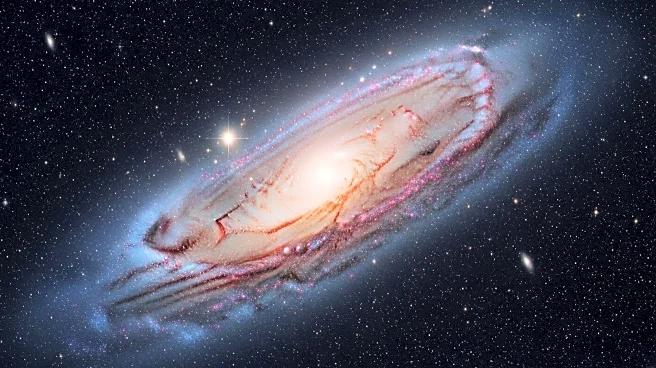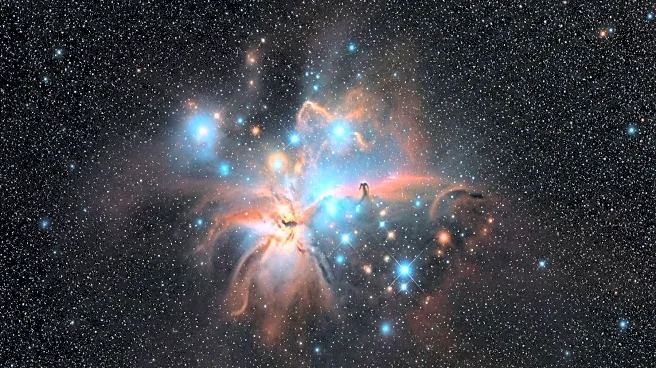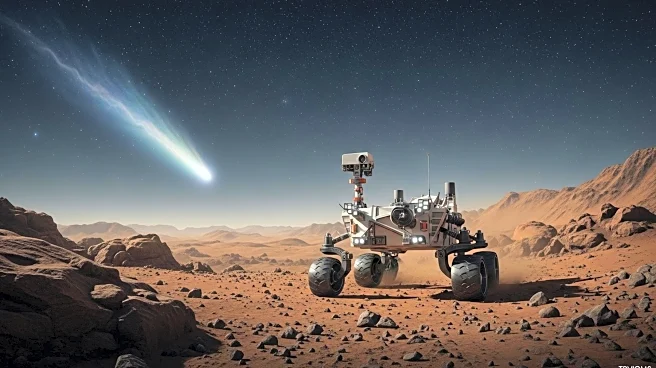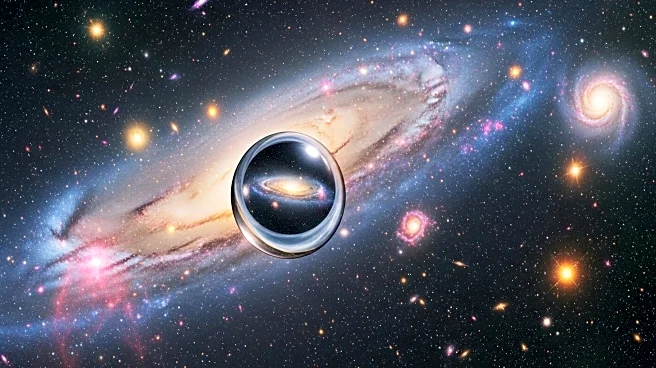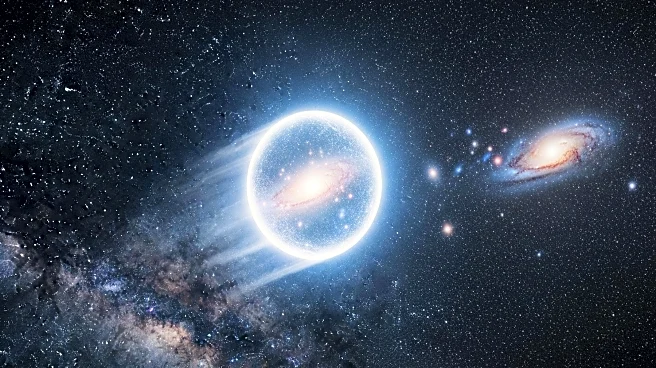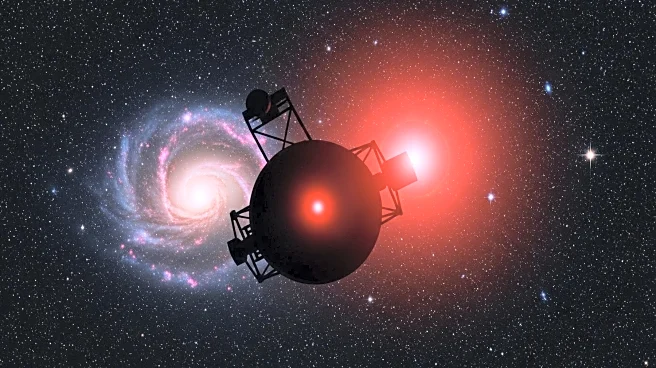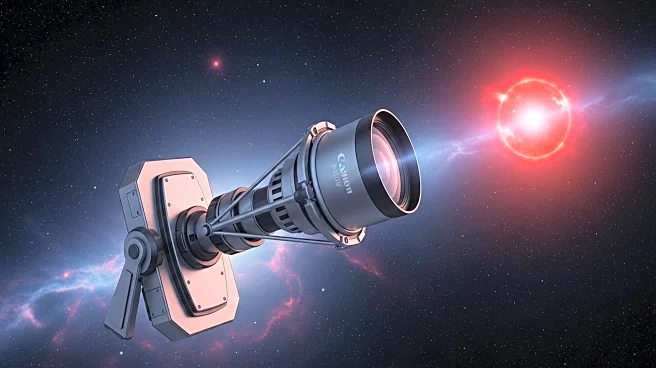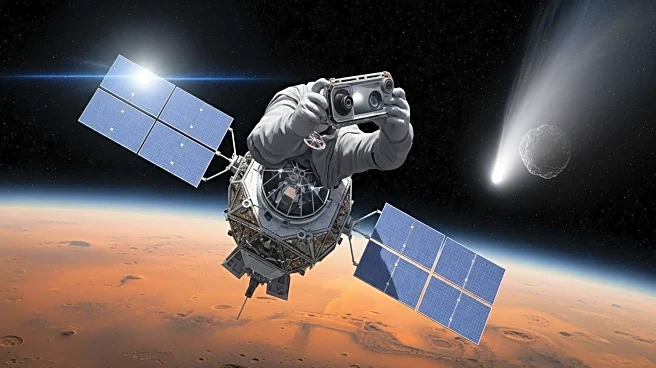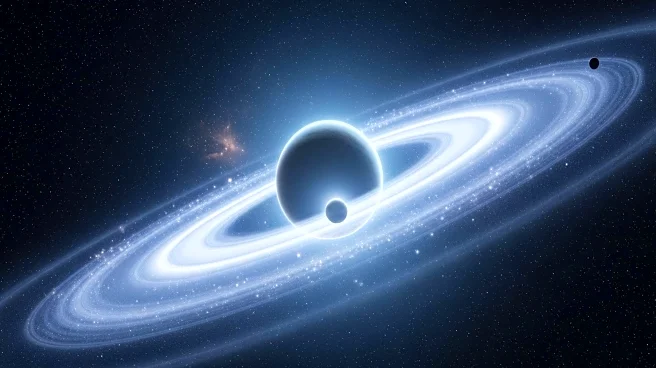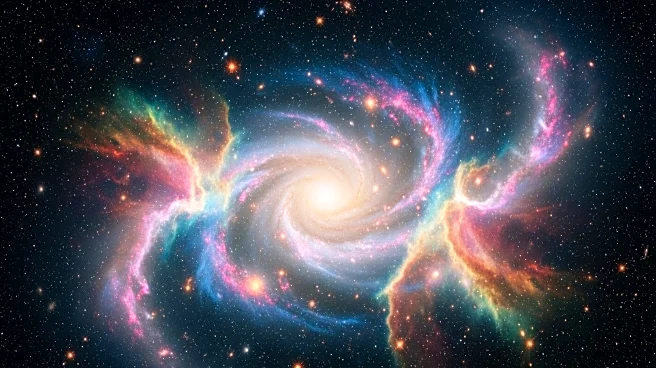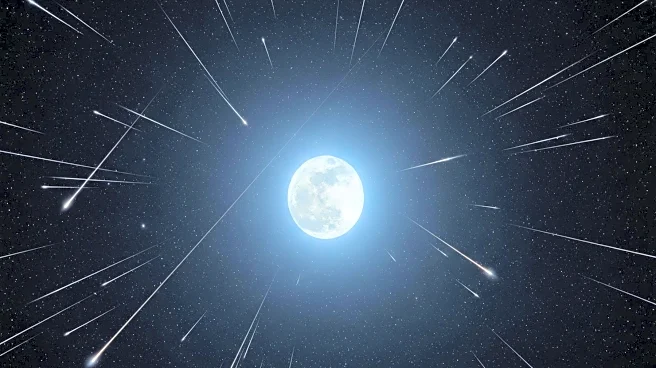What is the story about?
What's Happening?
NASA's Hubble Space Telescope has captured detailed images of the spiral galaxy NGC 6000, located 102 million light-years away in the constellation Scorpius. The galaxy features a glowing yellow center and blue outskirts, reflecting differences in the ages, masses, and temperatures of its stars. Older, cooler stars are found in the center, while younger, hotter stars populate the spiral arms. The images were collected as part of a survey of recent supernova explosions in nearby galaxies, with NGC 6000 having hosted two supernovae in 2007 and 2010. The observations help researchers understand the masses of supernova progenitor stars and their potential stellar companions. Additionally, an asteroid from our Solar System was captured in the image, appearing as four thin lines due to multiple exposures.
Why It's Important?
The Hubble Space Telescope's observations of NGC 6000 provide valuable insights into the lifecycle of stars and the dynamics of galaxies. By studying supernovae and their progenitor stars, scientists can better understand stellar evolution and the processes leading to star explosions. This research contributes to the broader field of astrophysics, enhancing knowledge about the universe's structure and the forces shaping it. The ability to capture such detailed images also underscores the importance of space telescopes in advancing scientific discovery, offering a glimpse into cosmic phenomena that are otherwise inaccessible.
What's Next?
Continued observations by the Hubble Space Telescope and other astronomical instruments will further explore the characteristics of galaxies like NGC 6000. Researchers may focus on identifying more supernovae and studying their remnants to refine models of stellar evolution. The data collected could also inform future missions and the development of more advanced telescopes, potentially leading to new discoveries about the universe's origins and behavior.
Beyond the Headlines
The presence of an asteroid in the images of NGC 6000 highlights the interconnectedness of cosmic events and the challenges of astronomical observation. Such interlopers can provide additional data about objects within our Solar System, offering opportunities for multi-faceted research. The study of galaxies also raises questions about the potential for life in other parts of the universe, as understanding star formation and planetary systems is crucial to identifying habitable environments.
AI Generated Content
Do you find this article useful?
